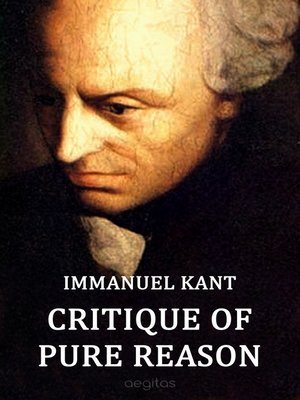

For Watkins, the faculties are distinct in kind insofar as: Watkins finds Kant's official definitions of sensibility and understanding in the first Critique misleading, since, taken literally, they would contradict Kant's position that the pure intuitions of space and time are sensible representations (21). This is contrary to interpretations that take this to be a mere assumption. He offers a novel account of the nature of each faculty and argues that Kant has principled reasons for maintaining that they "cannot exchange their functions" (A51/B75).

Eric Watkins focuses on the distinctness thesis. Kant holds that the cognitive faculties of sensibility and understanding are distinct in kind rather than degree, though he also thinks they cooperate closely. Rather than attempt to serially summarize each chapter - as the editor, James O'Shea, does in his clear introduction - I will instead organize my discussion around what I take to be some of the central themes of the volume (and, for that matter, the Critique itself), highlighting, comparing, and evaluating just a few of the claims and approaches within the space allotted me. Its structure loosely tracks the organization of the first Critique, though some early chapters bear on later sections of Kant's book, while some later chapters bear on earlier sections. The volume cannot be reproached for one-sidedness. Another example: one author (Allais) defends "reading the Critique forward" (47) - by which she means reading the Transcendental Analytic in light of the Aesthetic - while another (Conant) defends the opposite strategy (129-130). On the latter point, for example, some authors are particularly concerned to view Kant's ideas against the background of his predecessors' positions, while others focus on the internal dynamics of his views, and yet others underscore the relationship between his ideas and contemporary philosophy. Different chapters can be fruitfully compared with regard to both content and general approach. Its fourteen chapters skew towards the latter task they present cutting-edge research by scholars at various stages of their careers on some central themes and arguments of the first Critique. Paperback (December 28th, 2017): $49.This book is the newest installment in the Cambridge Critical Guides series, which aims to "serv the twin tasks of introduction and exploration" (1).

Series: Cambridge Edition of the Works of Immanuel Kant This translation recreates as far as possible a text with the same interpretative nuances and richness as the original. Though its simple, direct style will make it suitable for all new readers of Kant, the translation displays a philosophical and textual sophistication that will enlighten Kant scholars as well. This entirely new translation of Critique of Pure Reason is the most accurate and informative English translation ever produced of this epochal philosophical text.


 0 kommentar(er)
0 kommentar(er)
